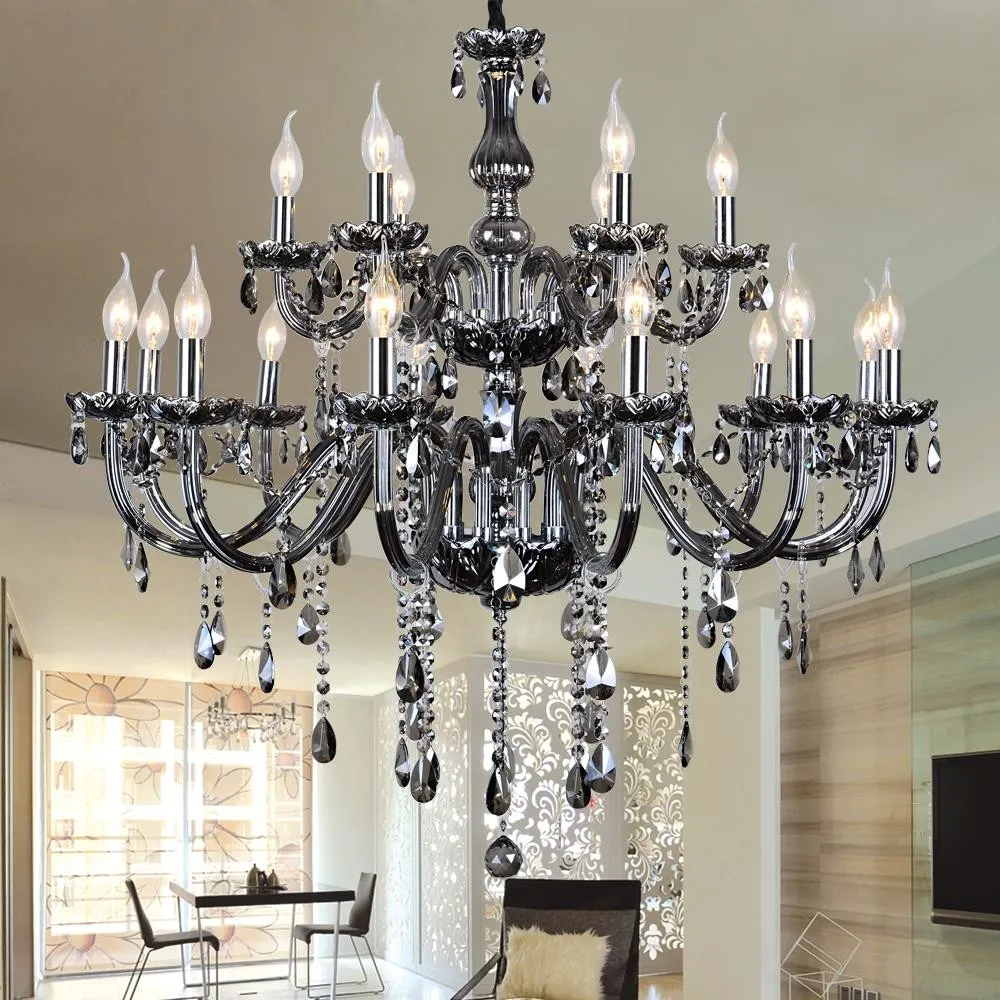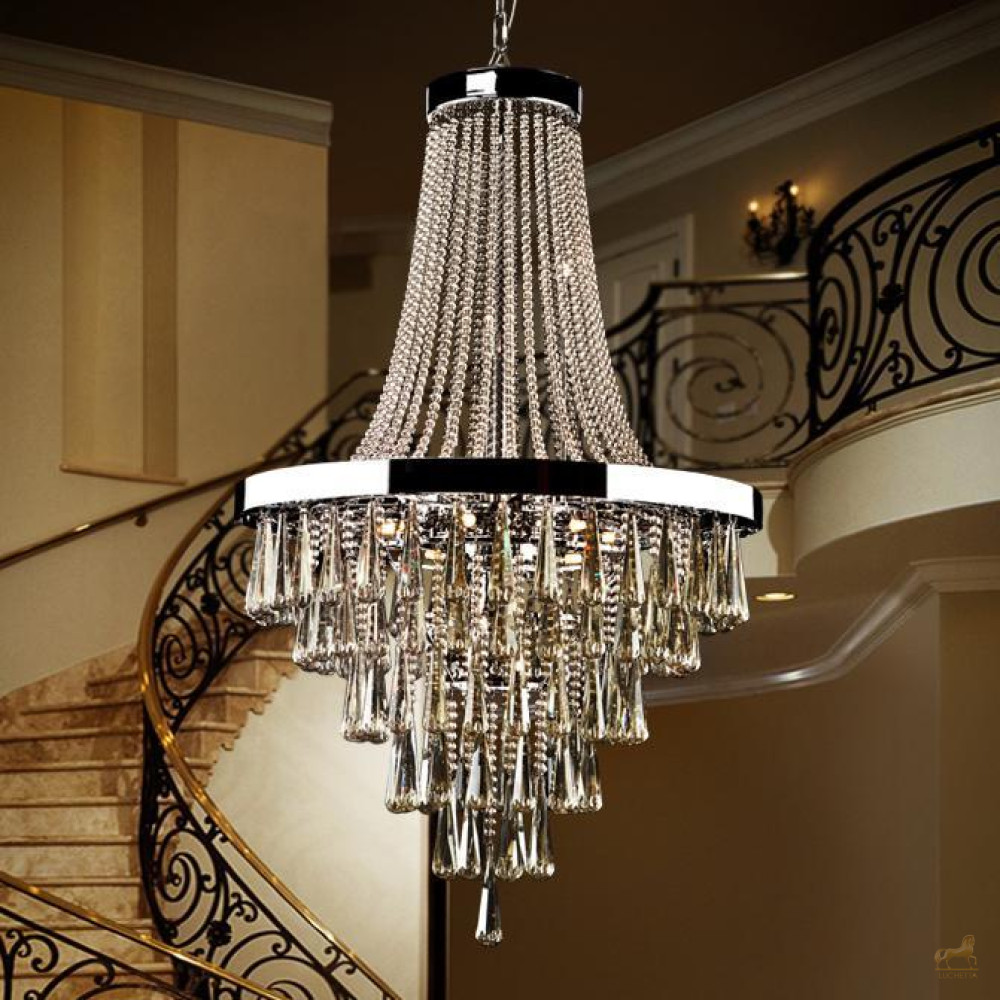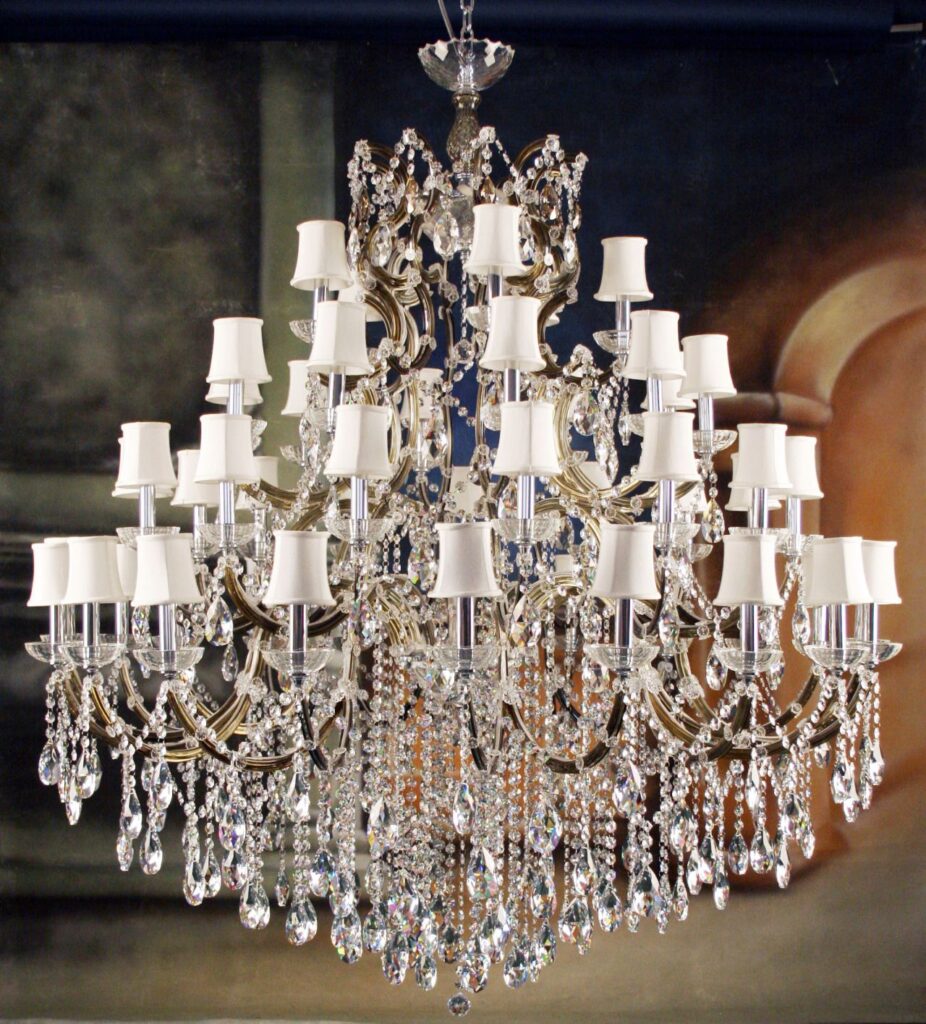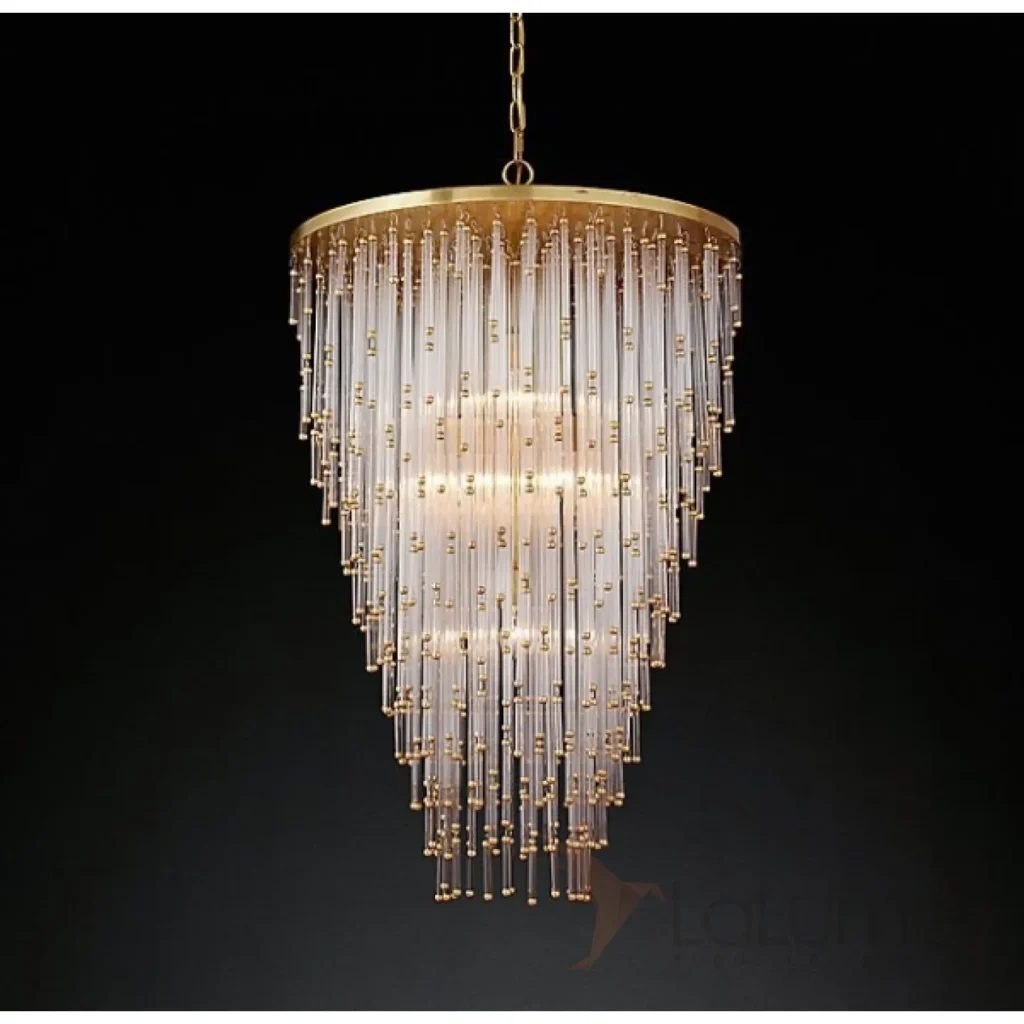Introduction
Chandeliers have epitomised grace and luxury in terms of interior design. This light fixture has been suspended, mesmerising its way from the palaces to contemporary homes. However, getting one that best suits your home could be quite tricky. This is a guide to walk you through all you need to know concerning chandeliers—from history to the various styles available today.
A Brief History of Chandeliers
From Medieval Beginnings to Modern Masterpieces
Chandeliers have a very ancient history, dating back to the mediaeval ages. Initially, they were just wooden crosses with spikes holding candles. They developed into these crystal-laden, elaborate devices that ring in our minds conceptions of luxury when we think of them today. Their history can help one appreciate their place in modern decor.

Types of Chandeliers: Finding the Right Style for Your Home
Classic Crystal Chandeliers
Probably for most of us, when one hears the term “chandelier,” images of a traditional crystal chandelier come to mind. These usually are big, elegant chandeliers that sport sparkling crystals; they look fabulous as light begins to bounce off of them for added glamour to a formal dining room or entryway.
Modern Chandeliers
Those with more contemporary tastes will be aware that today’s chandeliers are sleek, running from minimalist to artistic in design. But probably among the most distinguishable modern chandelier styles has to be the clean lines, geometric shapes, and at times unusual materials which make them just right for modern interiors.
Rustic and Farmhouse Chandeliers
If your home has a rustic or farmhouse type of aesthetic, consider a chandelier featuring wood, wrought iron, or even antlers. Chandeliers such as these radiate a cosy feel to a room, so they are great in kitchens, living rooms, or dining rooms in homes with a more casual character.
How to Choose the Right Chandelier Size
Proportional Placement: The Key to Harmony
The proper size chandelier is critical for complementing a room, rather than overwhelming it. An oversized chandelier is going to overwhelm a space; one that’s too small, you may not even pay attention to. Here’s a simple formula: the sum of the length and width of the room in feet should equal the diameter of the chandelier in inches.
Height Matters Too
A taller chandelier will make a grand statement in high-ceiling rooms. In lower ceilinged rooms, you may want to go smaller in scale so as not to make the room feel cramped. As a general guideline, a chandelier should hang about 30-34 inches above a dining table if it is within a room that has an 8-foot ceiling. Add 3 inches for every additional foot of ceiling height.

Choosing the Right Chandelier for Each Room
Dining Room Chandeliers: The Centrepiece of Your Meals
Dining room is one of the most common chandeliers. Focal is the purpose served by a chandelier. It should go hand in hand with the table shape and style. People with oval and rectangular tables can consider linear chandeliers while a single central chandelier is best for people with roundtables.
Entryway Chandeliers: Making a Grand First Impression
Your entryway chandelier will be what sets the tone for the rest of your home. A multi-tier chandelier might be a great idea for a larger foyer, while a more modest design will add an air of elegance without commanding too much visual space in a small one.
Bedroom Chandeliers: Bringing the Luxe To Life
A chandelier in a bedroom is just powerful and will make the room feel extremely luxurious. Besides, the fixture is substantial to make a statement installed above your bed. With one of these, ensure it isn’t overpowering your room design. When in doubt you can always dim the lights to soften things up with a dimmable version.
Chandeliers in the Bathroom: Surprising Sophistication
If you thought chandeliers in a bathroom are trite, then you are entirely wrong. They’re surprisingly sophisticated. Go for an undersized, moisture-proof one installed directly over a free-standing bathtub for a particularly jaw-dropping effect.
Materials Matter: Choosing the Right Finish
Crystal Chandeliers: Sparkle and Shine
Crystal chandeliers are the ultimate symbol of luxury due to their flashy, light-reflecting skill. They best fit where they can be the centrepiece of a more formal space.
Metal Chandeliers: Sleek and Modern
Metal chandeliers are available in chrome, brass, and black colour finishes, all of which are stylish and contemporary—great for a modern, contemporary home.
Wood and Wrought Iron Chandeliers: Rustic Beauty
Wood, along with wrought iron chandeliers, could effortlessly give a room a warm touch and character for a more dated, rustic or even industrial feel. They, for the most part, become part of the décor in farmhouse and industrial styles for the general material usage in design.

Chandelier Maintenance: Keeping Your Fixture Sparkling
Cleaning Crystal Chandeliers
A person needs to clean crystal chandeliers frequently for them to sparkle. Their points may get dust and hence their sparkle will be muffled. A mixture of warm water and vinegar shall be a very good solution in cleaning delicate crystals.
Caring for Metal and Wood Chandeliers
In general, this is a much easier task compared to the cleaning of crystal chandeliers. One only needs to dust them regularly and polish them once in a while to have them looking good as new. Be sure to use a wood-specific cleaner with wood chandeliers so that you do not ruin the finish.
Chandelier Installation Tips
Hire a Professional or DIY?
Chandelier installation can be pretty complex, especially when it involves heavy fixtures or high ceilings. Although most homeowners may feel quite competent to do the job themselves, a professional will ensure that things go off without a hitch and are executed safely.
Provide adequate support.
Chandeliers can be very heavy, and it is vital that the ceiling be checked to support the weight of your fixture. This may include bracing or reinforcing the ceiling or even using a special chandelier brace.
Wiring Considerations
Unless you are putting up a chandelier where there was already another light fixture in place, the wiring should not be too difficult. If you’re installing a chandelier where one didn’t already exist, then you’ll more than likely have to run new wiring, which is another reason to consider hiring a professional.

The Impact of Chandeliers on Home Value
A Wise Investment in Elegance
Chandeliers can do a lot to enhance the aesthetic value of your home and, in some cases, raise its value. Chandeliers that are of good quality and installed properly are considered a luxury feature, at times, especially in areas such as a dining room or even entryway.
Enhance Curb Appeal of Your Home
Chandeliers, or an upgrade to them, can increase your home’s appeal to any buyer if you are thinking of selling. They give an air of class and finesse, making the rooms appear polished and finished.

FAQs About Chandeliers
1. What is the best type of chandelier for a small room?
Even the smallest room will work with a mini chandelier or flush-mount chandelier. These choices create a glamorous essence of the chandelier without overwhelming a small room. Crystal and metal chandeliers are two of the popular choices for a small room, as they reflect light and make the room appear larger.
2. How do I determine the right size chandelier for my dining room?
To know what the size should be, you need to add the length and width of the dining room in feet and convert that number into inches. Your chandelier’s perfect diameter can be obtained in this way. Assuming your dining space measures 12×14 feet, a chandelier with a diameter of approximately 26 inches would suit it well.
3. Can I install a chandelier myself, or should I hire a professional?
Even though it is doable to put up a chandelier by oneself, getting an expert is wise particularly for those who are big or sturdy. Retaining an expert guarantees that your chandelier stays intact, upholds its course of power and hence safe.
4. What are the different types of chandeliers available?
For example, there are different styles of chandeliers such as crystals, modern designs, rustic and small ones. The crystal type is classic and elegant while modern ones have sleek designs. The rustic ones usually use materials like wood and wrought iron whereas mini chandeliers fit perfectly in smaller spaces.
5. How high should a chandelier hang above a dining table?
For an 8-foot ceiling, this should be about 30 to 34 inches above the dining table. If your ceiling is higher, add 3 inches to this height for every additional foot in ceiling height
6. How do I clean and maintain my chandelier?
Clean crystal chandeliers regularly by dusting the crystals and occasionally using a mixture of warm water and vinegar to clean them. Clean metal and wood chandeliers with a soft cloth, dusting it and, if necessary, polishing them. Always switch off the light while cleaning and let it cool.
7. Are chandeliers energy-efficient?
Chandeliers may be energy-efficient by fitting them with LED light bulbs. They use less energy and are also long-lasting than incandescent bulbs, which makes them very cost-effective.
8. Can a chandelier increase the value of my home?
Yes. A well-chosen and placed chandelier can give aesthetic value to your house and increase its value, mostly in the dining room or any entry area.
9. What materials are commonly used in chandeliers?
Chandeliers are fabricated from many types of materials: crystal, glass, metal, wood, and even plastic. This will be up to what goes well with the decor of your room. Crystal and glass give a more luxurious feel, while metal and wood provide modern and rustic touches respectively.
10. Can I use a chandelier in a bathroom?
Yes, chandeliers can be installed in the bathroom, but one should use only a moisture-resistant fixture. A smaller chandelier can be stylish and elegant over a bathtub or in the middle of the bathroom.
11. What is the difference between a chandelier and a pendant light?
While they all hang from the ceiling, a chandelier typically comes with multiple branches or arms, and multiple sources of light, whereas pendant lights have only one. Chandeliers are largely considered more for decoration and making statements, while pendant lights are versatile in applications.
12. How do I choose the right chandelier style for my home?
Consider your present decoration and the atmosphere you want to show. Elegant and formal with a touch of sophistication—these are what crystal chandeliers can give. Sleek and minimalist works best for modern homes. Rustic chandeliers fit perfectly into homes that boast a cozy, farmhouse feel.
